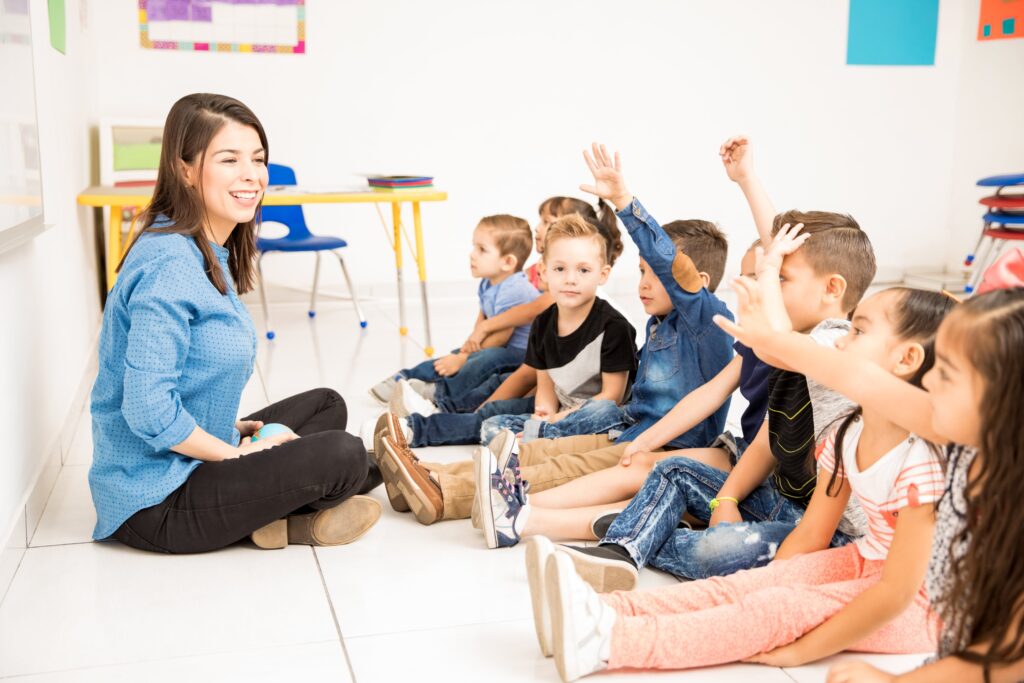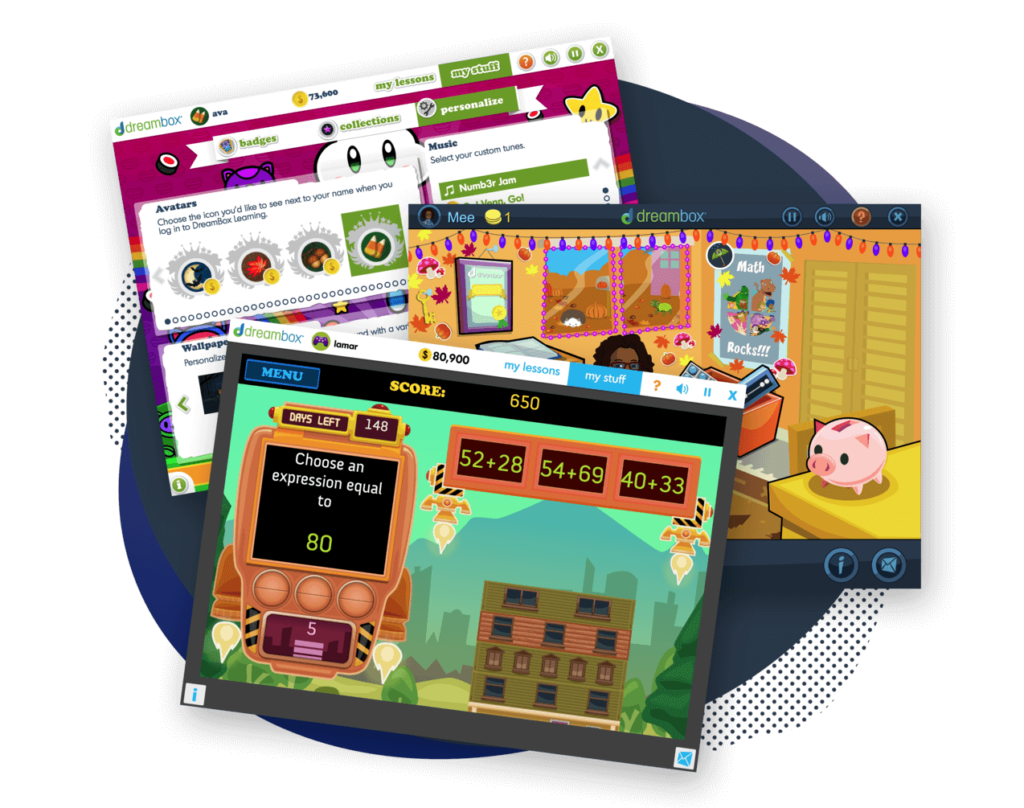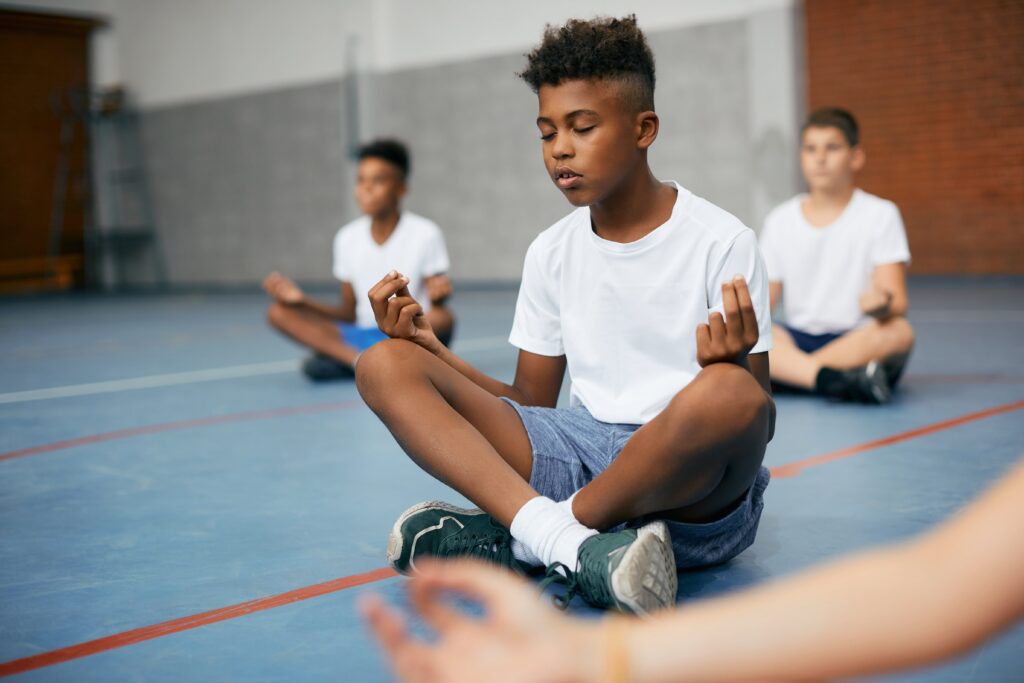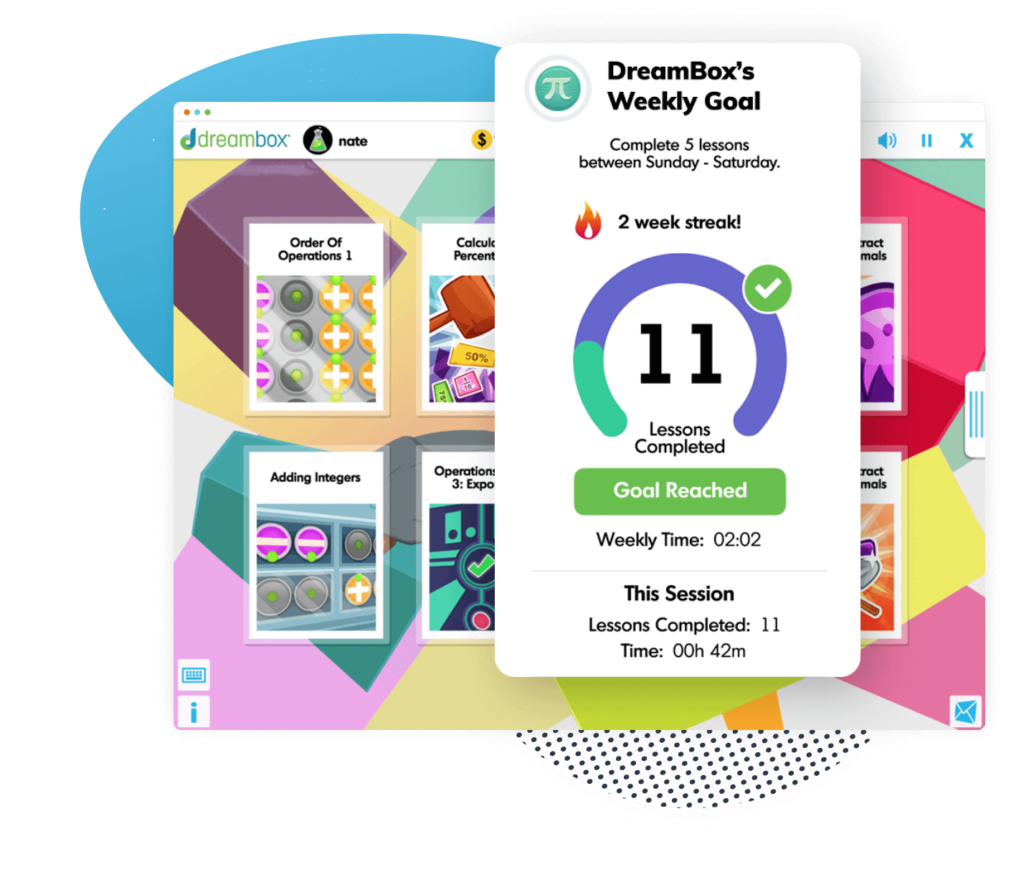40 Brain Breaks for Kids
Students have the ‘wiggles’? Brain breaks can help them rest, reset, and refocus!

Author
Katie Wickliff
Published:
September 2025
Key takeaways
- • Brain breaks are brief, intentional pauses during classroom time
- • These breaks can incorporate physical movement, mindfulness exercises, creative play, and more
- • Children of all ages and attention abilities benefit from brain breaks
It’s the middle of the afternoon, and you’re working on a task that requires sustained mental focus, like editing an important document or reading a detailed email. You’re making good progress, when suddenly you realize you’ve been daydreaming for ten minutes! If this sounds familiar, don’t feel bad—we’ve all been there, and it sounds like you might benefit from a brain break. Studies have shown that these short periods of rest allow the brain to briefly recharge before returning to work.
While brain breaks are important for adults, they are even more essential for children. Because children’s attention systems are still developing, focusing on a task takes a significant mental effort. Luckily, it’s simple to incorporate these breaks into the classroom or homeschool. We’ll explore the benefits of brain breaks and how they support learning, especially in math. We also explain the different types of brain breaks and share 40 fun, easy examples to try. Let’s get started!
What Are Brain Breaks and Why Do Kids Need Them?
Brain breaks are short, intentional pauses that allow students to step away from their work and reset their minds and bodies. Through movement, mindfulness, and creative play, these breaks benefit kids in a myriad of ways. In addition to the cognitive benefits of improved focus and reduced mental fatigue, brain breaks help kids physically by getting their “wiggles” out and increasing oxygen and blood flow. They also help kids emotionally by lowering stress, increasing self-regulation skills, and adding a bit more fun to their day. Additionally, other studies show that when kids take short breaks, their brains shift into an active mode that helps process memories and make sense of the world. All of these benefits lead to calmer, happier, and more motivated learners.
40 Brain Breaks for Kids
It’s important not to confuse brain breaks with recess or other types of free time, as brain breaks are purposefully structured and brief. This way, kids get just the right amount of reset without becoming overly stimulated or distracted. Here are 40 brain break ideas sorted into different categories: physical, mindful, creative, and learning-based.
10 Physical Brain Breaks
- Dance Dice: This game is a great way to get moving! Roll a dice, and the number it lands on corresponds with a specific dance movement. Ideas might include doing the robot, the Macarena, or the chicken dance!
- Color Chase: This easy brain break requires no preparation or equipment. Have students stand up from their workspace and call out two instructions: a color and a movement. For example, you might say “Blue! Skip!” Students then quickly skip around the room until they reach and touch something blue.
- Animal Walks: Have kids move like different animals. For example, they can hop like a frog, stomp like an elephant, swim like a fish, or pounce like a cat.
- Popcorn Poppers: A favorite in my elementary school classroom. Have kids curl into a tight ball and then “pop” up as high as they can! Try setting this one to music and having kids pop up and perform a movement when the song says a certain lyric.
- Invisible Jump Rope: Each student jumps an imaginary rope for short bursts. Pretending to jump rope helps kids practice balance, coordination, and power, all while using their imaginations.
- Simon Says: This classic game is a great way to get kids moving while developing listening skills. To play, give simple instructions like “Simon says clap your hands,” but only follow the action if it starts with “Simon says.” Let kids take turns as Simon!

- Math Moves: Students solve a quick math problem as a group, and the answer determines how many squats, kicks, or jumping jacks to do! It’s a great idea to present problems that a variety of learners can solve– this encourages confidence and community.
- Hot Potato: This fast-paced brain break helps kids release energy, build coordination, and practice taking turns. To play, have children sit or stand in a circle and pass a small, soft object while music plays. When the music stops, the child holding the “hot potato” does a silly action. The whole group copies, and the game continues.
- Mystery Moves: Before the class begins, write different movements on strips of paper and place them into a bag. Have students pick out the surprise movement and yell it out to their classmates. This game can last as long as you’d like!
- Silent Line Up: This game is a great way for students to practice communicating in different ways while also learning more about their classmates. To play, students line up according to height, birthday, or alphabetical order. They must be completely silent and rely on hand movements or other gestures to determine the correct order.
Table of contents
Access more math practice with DreamBox
Turn math into playtime with DreamBox Math
DREAMBOX MATH
Get started for FREE today!

10 Mindfulness and Breathing Brain Breaks

- Rainbow Breathing: Ask children to take a deep breath. As they inhale, imagine painting one color of the rainbow in the sky. As they exhale, picture another color. There’s no “right” color order in this exercise; students are free to imagine whatever they wish.
- Stuffed Animal Breathing: Each child lies down and places a small stuffed animal on their stomach. As they breathe, the stuffed animal gently rises and falls, like it’s floating on a slow, calm ocean. This encourages children to breathe into their bellies, which relaxes the nervous system.
- Vacation Visualization: Guide students to close their eyes and imagine a calm place they’d like to visit. Ask students to first notice three things they can hear, three things they can smell, and three things they can see.
- Five Finger Breathing: Kids hold up one hand and trace up and down each finger with the other. As they move up a finger, they breathe in; as they move down, they breathe out. This rhythmic pattern combines breathing with gentle movement and helps with self-regulation.
- Body Scan: Ask students to lie down on the floor or rest their heads on their desks. Gently guide them to focus on each part of their body, moving slowly from their toes to the tops of their head, noticing tension and relaxing as they go.
- The Magic Bubble: Ask kids to close their eyes and imagine they’re surrounded by a large bubble. The bubble is soft but strong, and it can be any color they wish. The bubble is cozy and safe, and just for them.
- Guided Yoga: Encourage children to practice mindfulness through yoga. Plan 5-10 poses ahead of the break, and guide students through each posture. Great poses for kids include upward and downward dog, tree pose, or cat/cow pose. Repeat the series if time allows.
- The Star Inside: Ask kids to close their eyes and imagine a glowing star inside their chests. The star can be any color they choose, but as they breathe in, the star grows bigger and brighter. As they breathe out, the light gently moves through their whole body.
- Flower/Candle Breathing: Invite kids to close their eyes and take a slow, deep breath as if they’re smelling a flower. Then, as they exhale, have them imagine gently blowing out a candle. This simple breathing exercise helps children relax and refocus.
- Gratitude Pause: Simply feeling grateful can lower stress and frustration. Ask kids to think of one thing they are thankful for— a person, an animal, or even a favorite snack. Ask them to picture it clearly in their minds and notice how it makes them feel inside. If time allows, students can share their gratitude.
10 Sensory and Skill-Building Brain Breaks

- Tactile Mystery Bag: Fill a bag with objects like a smooth stone, stretchy rubber band, or fuzzy mitten. Without peeking, kids feel the object, describe it, and try to guess what it is. This activity increases tactile awareness and curiosity.
- Mystery Smells: Similar to the tactile mystery bag, but with scents! Place a few drops of different essential oils on cotton balls and set up stations around the room. Kids move from station to station and try to identify the scent.
- Rhythm and Beat Copycat: Build listening and memory abilities with this easy brain break. Clap, tap, or stomp out a simple rhythm and challenge kids to repeat it back to you. As kids get the hang of the game, build up to more challenging patterns and combinations.
- Playdough Challenge: Kids love playdough! Before class, divide the dough into enough small balls for each child. Call out instructions like “form a triangle” or “smash it flat.” This activity improves dexterity and helps develop fine motor skills.
- Balance Beam: Place a long strip of colored tape on the floor to create a “balance beam.” Kids walk across, heel to toe, while balancing a soft object on their head. This quick and easy challenge improves balance and focus while strengthening gross motor skills.
- Sounds All Around: Have students close their eyes and sit very still for several seconds, listening to the sounds around them. Afterward, have them share what they heard— kids are often surprised that the quiet is never totally silent!
- Partner Air Drawing: Divide students into pairs and have them sit facing each other. One partner “draws” a word in the air while the other tries to guess it. This fun activity builds attention skills and hand-eye coordination while giving kids an opportunity to connect with a friend.
- Nature Touch Table: A perfect activity for fall! Place leaves, flower petals, pinecones, or acorns on a table. Let students explore the items while discussing their shapes, textures, and weights. Kids can also collect their own nature items and swap with a friend.
- Taste Test: Taking allergies into consideration, offer taste samples of snacks like pretzels, crackers, or small pieces of candy. Encourage students to pause and notice the flavor and texture. This was an especially popular activity with my own kids!
- Feather Float: Give each child a colorful feather. Have them gently blow it into the air and try to keep it in the air as long as possible. Even though kids are moving around, the feather float has a calming effect on many students.

The math program that drives results
Get started today!
DreamBox adapts to your child’s level and learning needs, ensuring they are appropriately challenged and get confidence-building wins.
10 Educational and Classic Brain Breaks
- Story Starters: While sitting in a circle, begin by telling the first sentence to a story– make it creative and engaging! Then, go around the circle, encouraging each child to add a sentence. This fun game supports listening skills, creative thinking, and lots of laughs!
- Picture Prompts: Similar to Story Starters, but with art! Show kids a silly photograph or illustration and ask them “What happens next?” Kids draw the next part of the story, sparking creativity and reinforcing basic story elements.
- Math Minute: Assign each corner of the room a number (1–4). Call out a math problem, and kids run to the corner that matches the answer. When they get there, they freeze in a silly pose until the next round. This fast-paced game gets kids moving while practicing addition, subtraction, multiplication, or division facts.
- Trivia Toss: Using a soft ball or beanbag, ask a question, toss it to the student who answers, then they toss it to someone else for the next question. This game works with any subject, but is especially fun with simple math word problems.
- Words Alive: Say a word or phrase and have kids create a gesture or movement that represents it. This brain break moves their minds and bodies at the same time!
- Around the World: In this classic game, one student stands next to a seated classmate. Call out a question, and the two students race to answer. The winner moves on to the next desk, while the other sits down. The goal is to “travel” around the room by winning at each stop.
- Alphabet or Number Hunt: Call out a letter or number, and have kids find an object in the room that starts with that letter or has that number on it. They can physically move toward the object or raise their hands.
- Art in One Minute: Call out a prompt, like “your favorite food” or “an imaginary monster” and give the students exactly one minute to sketch as fast as they can. This one encourages creativity and quick thinking.
- Simon Says Learn: The classic game, but with an educational twist. Combine movement with learning concepts, such as “Simon says how many sides does a triangle have?” or “Spell the word DOG.” This is a great way to reinforce concepts students are learning in class.
Freeze Dance: Play an upbeat song and let kids dance around the room. When the music stops, they must freeze in whatever funny position they’re in. Start the music again and repeat. This classic game is quick, simple, and always brings lots of smiles!
How to Use Brain Breaks Effectively
Brain breaks are easily incorporated into the school day and will suit a variety of learning styles. They can be scheduled after focused work sessions or taken spontaneously as the need arises. Introduce breaks before children show restlessness or inattentiveness, keeping in mind the age and maturity levels of your students. A visual countdown helps keep breaks under control, so display a timer on your smartboard or verbally remind students how much time is left.
If you have time for a longer break, try Dreambox Math. This interactive program strengthens math skills through games and other engaging activities.
FAQs about Brain Breaks
An example of a brain break is “animal walks”. Ask kids to jump like a frog, slither like a snake, or pounce like a cat
The best brain break is one that meets the needs of your learners, whether physical, mindful, or educational.
A movement break is a type of brain break– brain breaks can be movement based, educationally based, creatively based, or more.
Yes. Studies show that when kids take short breaks, they return focused, regulated, and ready to learn.
Take at home math practice to the next level
Empowering parents and educators to make math practice more impactful. Plus, your kids will love it.
